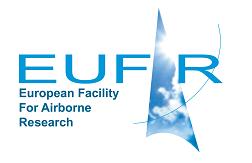Project

COOLAPEX: Towards assessment of water quality of the Curonian Lagoon using hyperspectral APEX sensor: optical water properties, phytoplankton and macrophytes.
Abstract
This EUFAR project performed an assessment of water quality of the Curonian Lagoon using hyperspectral APEX sensor: optical water properties, phytoplankton and macrophytes.
The Curonian Lagoon is a large, shallow (total area 1584 km2, mean depth 3.8 m), mainly freshwater estuary located in the south-eastern part of the Baltic Sea. It
is divided between Lithuania (northern part, 26 % of the lagoon area) and the Russian Federation. The Curonian Lagoon provides significant ecological services
to society: aquaculture, fishery, recreation, water supply and transport. This aquatic system plays an important role in carbon and other global biogeochemical
cycles. The Curonian Lagoon is naturally productive water basin that has been impacted by the undesired processes of both eutrophication and climate change.
Nowadays the lagoon is considered to be hyper-eutrophic with recurring spring diatom blooms followed by summer cyanobacteria blooms which are a major concern in this region because the chlorophyll-a concentration can be extremely high (up to about 200 mg m-3) and, under specific climate conditions, can be associated with a surface accumulation of algae.
Currently, our ability to monitor such a large ecosystem is limited by a number of in situ stations, samples and scarce collaboration with neighboring country. Satellite remote sensing is a valuable asset for monitoring such a large water bodies for various purposes, however, this is not possible in this case due to unsuitable spectral resolution, and the airborne hyperspectral sensor APEX will be used instead.
The choice of the Curonian Lagoon as one of our dedicated study sites is strongly based on the availability of the existing field radiometric measurements, in situ data, available facility for the field campaign that will be funded by FP7 INFORM project. The field, airborne and satellite data collected during this field campaign will produce one of the most extensive, datasets for optically complex waters and an invaluable resource for the scientific community. The level-1b data from APEX will be processed to water-leaving reflectance by VITO. APEX is the only sensor for which water-leaving reflectance products are provided operationally in EUFAR.
The objectives of this project are:
• to test and validate algorithms for retrieval of the different main phytoplankton functional types, the absorption coefficient of yellow matter, phytoplankton primary
production, spatial distribution and macrophyte functional groups;
• to evaluate the spatial and temporal dynamics of phytoplankton and correlate this intraday variability with meteorological conditions during the study period, with
the final goal of evaluating their influence on phytoplankton growth dynamics;
• to extend ongoing activities of FP7 INFORM project on the development of specific algorithms that will be validated using field radiometric measurements and
hyperspectral data simultaneously acquired during field campaign carried out in the Curonian Lagoon;
• to validate Sentinel-2 and Sentinel-3 (in case it will be fully operational) data with collected in situ and APEX data;
• to improve the knowledge of instrumentation currently available for monitoring activities;
Details
| Keywords: | EUFAR, COOLAPEX, phytoplankton |
|---|---|
| Previously used record identifiers: |
No related previous identifiers.
|
Related Documents
| COOLAPEX Project details |
